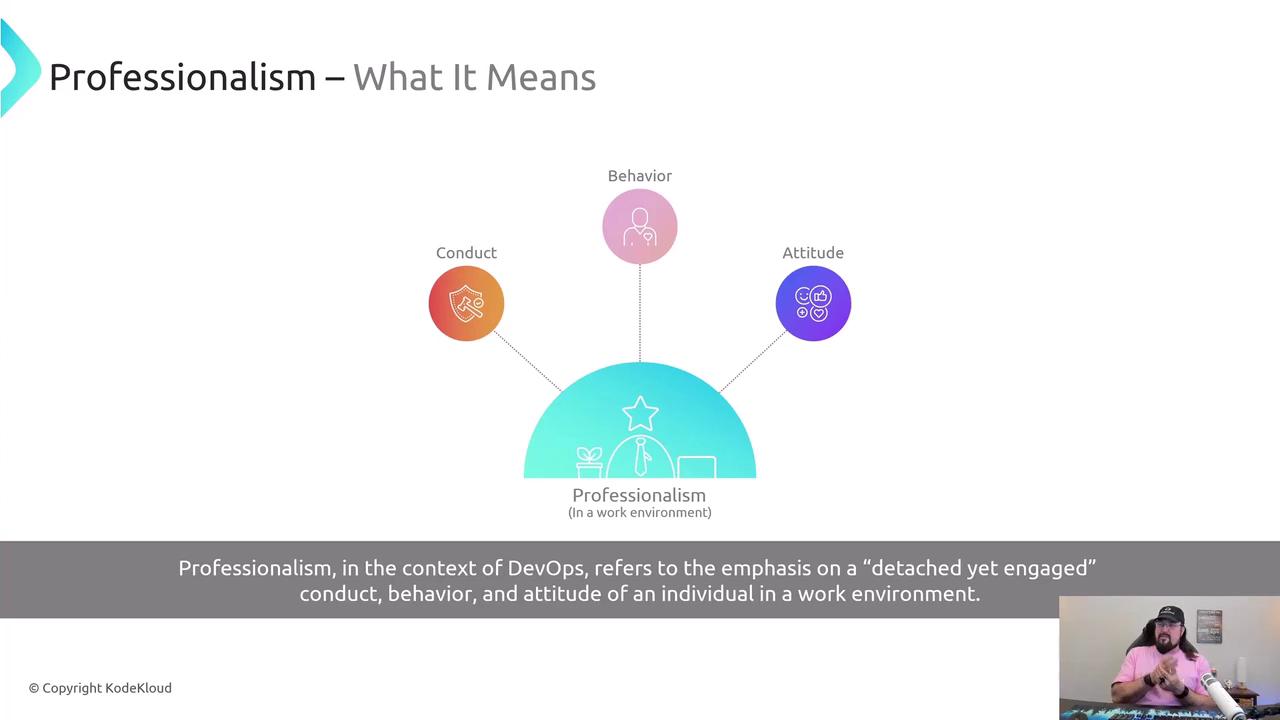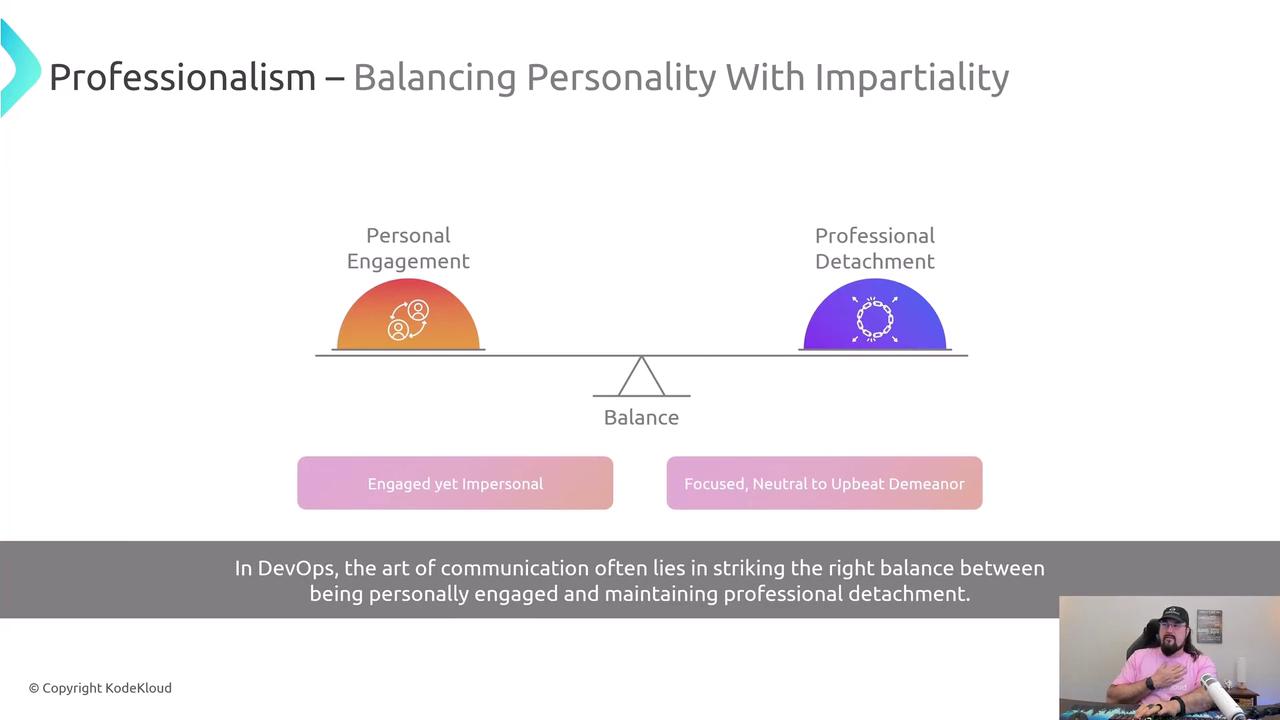Enhancing Soft Skills for DevOps Engineers: Essential Non-Technical Skills to Thrive
Communication Expression and Storytelling
Professionalism
Welcome, Soft Skills students! I’m Michael Forrester. In this lesson, we’ll explore professionalism for DevOps engineers—how to maintain an engaged yet appropriately detached attitude that optimizes focus, performance, and team trust. Professionalism covers your conduct, behaviors, and attitudes at work. These nonverbal signals shape how colleagues, clients, and managers perceive your reliability and commitment.

Why Professionalism Matters in DevOps
Professionalism is the foundation of career growth and high-performing teams. When you communicate clearly, deliver on commitments, and project confidence, you:
- Strengthen collaboration across development and operations
- Build credibility with stakeholders and leadership
- Promote a culture of continuous improvement

Defining Professional Behaviors in DevOps
Below are concrete behaviors that make professionalism actionable in a DevOps environment:
| Behavior | Description | Example |
|---|---|---|
| Consistent Communication | Proactively manage deadlines and agreements with clarity. | Sending daily stand-up summaries via Slack or Teams |
| Confidentiality | Share technical details on a need-to-know basis, respecting roles (peer, client, manager). | Encrypting sensitive logs and limiting access |
| Initiative | Identify process bottlenecks and propose improvements that benefit the team and organization. | Automating repetitive CI/CD tasks with Terraform scripts |
| Adaptability | Embrace changes that drive value; question those that may introduce chaos. | Updating playbooks when infrastructure evolves |
| Positive Under Pressure | Maintain a solution-focused attitude during incidents or tight deadlines. | Coordinating postmortems without blame |

Balancing Engagement and Detachment
Professionalism means staying present and empathetic while protecting your focus. To strike this balance:
- Bring your full expertise and humanity to each task
- Compartmentalize off-topic personal matters during core work hours
Warning
Avoid disengaging entirely. Professional detachment means managing personal matters, not ignoring team dynamics or feedback.

Applying Professionalism in Every Interaction
Every message—written, verbal, or nonverbal—is an opportunity to reinforce your professional brand. Keep the Seven C’s in mind:
- Clarity
- Completeness
- Conciseness
- Courtesy
- Correctness
- Concreteness
- Consideration
Additionally, ensure you are:
- Timely and responsive
- Constructive and forward-thinking (without forcing unsustainable change)
- Consistent in word and deed

Strategies for Navigating Challenges
Conflict, stress, and misunderstandings test professional composure. Use these tactics to turn obstacles into growth opportunities:
- Mindfulness Practices: Short, corporate-friendly meditation to reset focus.
- Active Listening: Signal engagement with phrases like “Great point!” to foster open dialogue.
- Empathy: Show genuine concern without overstepping boundaries.
- Feedback-Seeking: Engage peers or leaders early to co-create solutions.

Summary of Professionalism Elements
| Element | Focus |
|---|---|
| Attitude | Cultivate a growth mindset for peak efficiency and collaboration. |
| Behavior | Demonstrate reliability through clear communication, meeting deadlines, and confidentiality. |
| Conduct | Carry yourself with balanced humanity and impartial focus to achieve team and business goals. |

Note
Professional norms vary by industry and company culture. Adapt these principles to your organization’s expectations while preserving the core of engagement, non-reactivity, and goal-orientation.
Thank you for joining this lesson. I’m Michael Forrester—see you in the next article!
Links and References
Watch Video
Watch video content